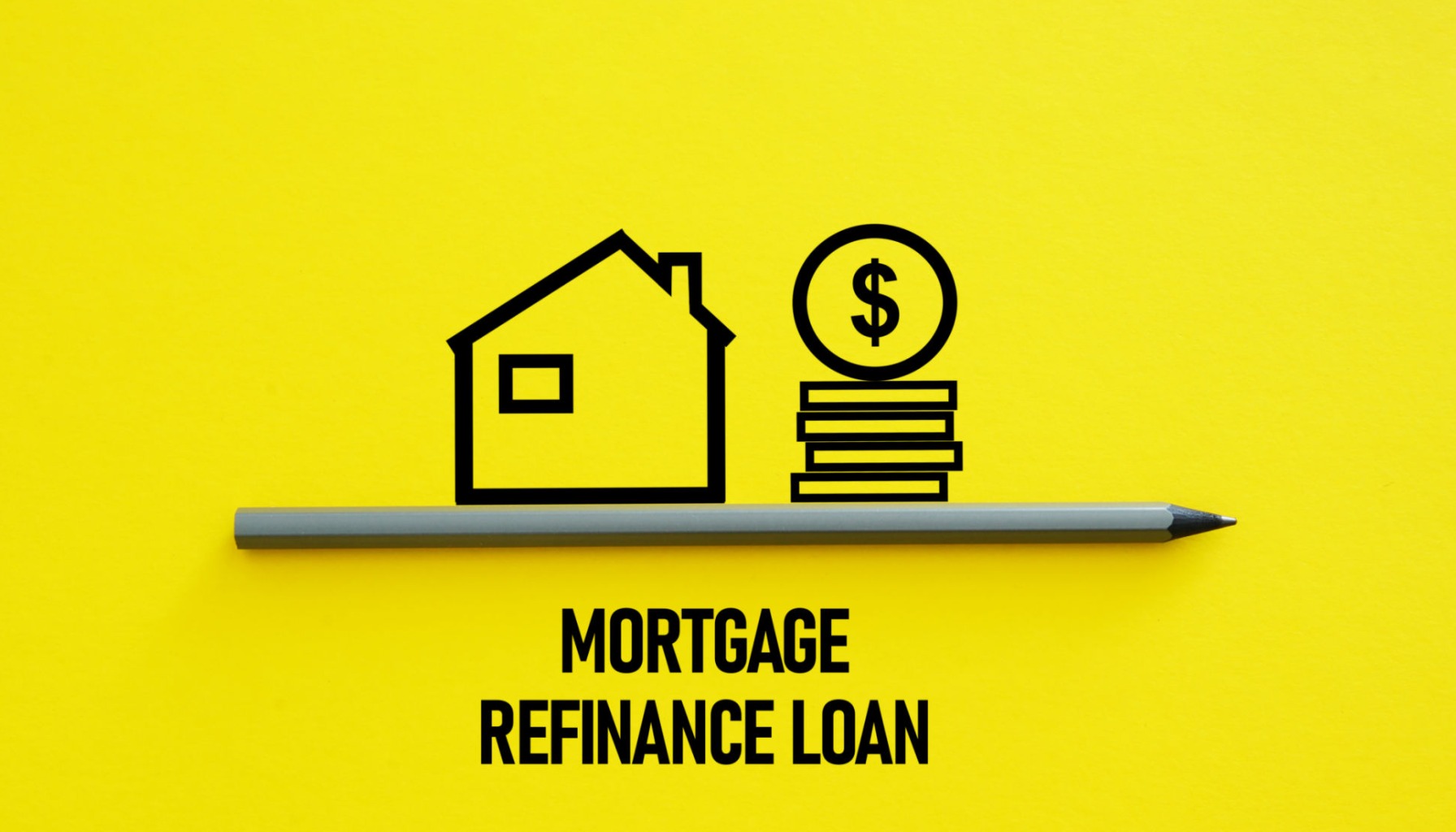If you're thinking about refinancing your home, you need to know that mortgage rates today have seen a significant shift. According to Zillow, the national 30-year fixed refinance rate has climbed a substantial 62 basis points, moving from an average of 7.03% to 7.65% in just the last week. This jump means that refinancing your home is suddenly a lot more expensive than it was a short time ago. It's a stark reminder that the mortgage market can change quickly, and staying informed is key to making smart financial decisions for your home.
This isn't just a minor fluctuation; a 62 basis point increase in a week is a pretty big deal, especially when you're talking about the cost of borrowing for your home.
Big Jump in Mortgage Rates Today: 30-Year Refinance Rate Rises by 62 Basis Points
What's Driving This Sudden Surge? The Fed's Influence and Market Jitters
So, what’s behind this abrupt jump in mortgage rates today? It's a complicated dance, but a major player throwing its weight around is the Federal Reserve, or the Fed.
Just recently, on September 17, 2025, the Fed made its first move of the year, cutting its benchmark interest rate by a quarter of a percentage point. They lowered the target range from 4.25%-4.5% down to 4.0%-4.25%. This was big news, especially after they had held steady for a while.
However, the economy is a bit of a puzzle right now. While the Fed is trying to make borrowing cheaper, inflation is still proving to be a tough nut to crack. The Fed's favorite inflation gauge, the core PCE price index, was still clocking in at a 2.9% year-over-year increase in August. That's higher than their 2% target. On the flip side, the economy itself is showing a lot of strength, with real GDP growing at a healthy 3.8% annualized rate in the second quarter of 2025. It's like the Fed is trying to pump the brakes on inflation while the economy is still speeding along.
The Chain Reaction: How the Fed Impacts Your Mortgage Rate
You might be wondering, “How does a Fed rate cut affect my mortgage rate?” It's not a direct switch. The Fed's actions influence mortgage rates indirectly, primarily through what happens with U.S. Treasury yields, especially the 10-year Treasury yield. This 10-year yield is like the lead singer of the band when it comes to setting the pace for 30-year fixed mortgage rates.
Think of it this way, according to data from Zillow:
- The Benchmark: Lenders look at the 10-year Treasury yield when they decide on rates for 30-year mortgages. Why? Because most people tend to hold onto their mortgages for about that long.
- Investor Appeal: When investors buy mortgage-backed securities (which are essentially bundles of mortgages), they want to earn a return that's competitive with super-safe investments like Treasury bonds.
- The “Spread”: Mortgage rates aren't just the same as the 10-year yield. Lenders add a bit extra, typically 1% to 2%, to cover risks. This extra bit is called the “spread.”
Right now, this spread has been wider than usual, often going over 2 percentage points. This wider spread has been acting like an anchor, keeping mortgage rates from falling as much as they might have, even when Treasury yields dip.
Decoding the Recent Shift: Why Rates Climbed Despite the Fed Cut
So, we had a Fed rate cut. Why did mortgage rates today go up so much, instead of down? It comes back to that stubborn inflation and the wider spread.
Even though the 10-year Treasury yield has seen some dips since the Fed's rate cut, that extra-wide spread has dampened the effect. The rate cut might have nudged Treasury yields down a little, but the market's demand for higher returns on mortgage-backed securities (due to added risk or uncertainty) means lenders have to charge more.
This is important for anyone looking to refinance. A seemingly small percentage point difference can add up to thousands of dollars over the life of a loan.
Here's a quick look at some relevant numbers:
- August 2025 (Approximate): 30-year fixed refinance rate around 7.01%
- September 30, 2025: 30-year fixed refinance rate jumped to 7.65%
- Increase: A 64 basis point rise (as reported by Zillow) from the prior average.
- Weekly Change: The rate rose 62 basis points from the previous week's average of 7.03%.
It's crucial to understand that these are national averages. Your actual rate could be higher or lower depending on your credit score, loan-to-value ratio, and the specific lender.
What This Means for Your Refinance Plans
This surge in rates directly impacts your ability to save money by refinancing.
- Higher Monthly Payments: If you were planning to refinance to lower your monthly payment, this jump means you might not see the savings you hoped for, or your payments could even go up.
- Reduced Savings: The overall savings you could achieve by refinancing are now smaller. A 62 basis point increase can significantly alter the break-even point for a refinance, meaning it will take you longer to recoup the closing costs.
- Shifting Opportunities: For a while, many homeowners with existing low-rate mortgages were refinancing. This rate increase might signal the end of that easy refinancing window for many.
Let's break down how this affects different loan types:
| Loan Type | Previous Rate (Approx.) | Current Rate (Approx.) | Change (Basis Points) |
|---|---|---|---|
| 30-Year Fixed Refinance | 7.03% | 7.65% | +62 |
| 15-Year Fixed Refinance | 5.86% | 6.42% | +56 |
| 5-Year ARM Refinance | N/A | 7.26% | N/A |
Source: Zillow
As you can see, it's not just the 30-year fixed that's moving up; other loan types are also seeing increases. The 15-year fixed jumped by 56 basis points, and even adjustable-rate mortgages (ARMs) are sitting higher.
My Take: A Cautionary Tale for Homeowners
From my perspective, this rapid increase serves as a wake-up call. We've grown accustomed to a period where rates were relatively low, leading many to believe refinancing was always a “no-brainer.” This kind of jump highlights how sensitive mortgage rates are to economic shifts and market sentiment.
It underscores the importance of:
- Timing: Getting the timing right in the mortgage market is incredibly difficult, even for professionals. What looks like a good deal one week can be less attractive the next.
- Understanding the “Spread”: Always ask your lender about the spread they are applying, and compare it to current market conditions. A wider spread means you're paying more for the lender's risk.
- Financial Health: Having a solid credit score and a good handle on your finances will always give you the best chance at securing the most favorable rate possible, even in a rising market.
Recommended Read:
30-Year Fixed Refinance Rate Trends – September 29, 2025
Looking Ahead: What's Next for Mortgage Rates?
So, where do we go from here? The crystal ball is always a bit cloudy in the world of finance, but here’s what I’m watching:
- Inflation Data: The Fed is very data-dependent. Key inflation reports (like the PCE and CPI indexes) will be crucial. If inflation truly cools down, the Fed might feel more comfortable letting Treasury yields fall further, which could eventually bring mortgage rates down.
- The Fed's Next Moves: Will the Fed cut rates again soon? More cuts would generally point to lower borrowing costs, but again, it’s about the Treasury yields and that pesky spread.
- The Spread Normalization: For mortgage rates to see a significant and sustained drop, that wider spread between Treasury yields and mortgage rates needs to shrink. This usually happens when market uncertainty decreases.
- Housing Market Dynamics: Buyer demand and housing inventory also play a role. If demand stays high or inventory remains low, it can put upward pressure on prices and indirectly influence rates.
While the possibility of rates dipping below 6% has been discussed for the future (perhaps into 2026), this recent climb definitely puts those hopes on hold for the immediate future. It’s more likely we’ll see a cautious, gradual decline if economic conditions permit, rather than a sharp drop.
Final Thoughts for Homeowners
If you were thinking about refinancing, it’s time to re-evaluate. The substantial jump in mortgage rates today means that the cost-benefit analysis has changed significantly.
- For Buyers: Affordability has taken a hit. It's even more important now to shop around for the best rate and understand all the fees involved.
- For Refinancers: If your rate is significantly higher than 7.65% and your financial situation is strong, it might still be worth exploring, but the savings will be harder to come by. Homeowners with rates below, say, 6.5%, are likely better off staying put for now.
Maximize Your Mortgage Decisions
Thinking about whether to refinance now? Timing is critical, and having the right strategy can save you thousands over the life of your loan.
Norada's team can guide you through current market dynamics and help you position your investments wisely—whether you're looking to reduce rates, pull out equity, or expand your portfolio.
HOT NEW LISTINGS JUST ADDED!
Talk to a Norada investment counselor today (No Obligation):
(800) 611-3060
Recommended Read:
- When You Refinance a Mortgage Do the 30 Years Start Over?
- Should You Refinance as Mortgage Rates Reach Lowest Level in Over a Year?
- NAR Predicts 6% Mortgage Rates in 2025 Will Boost Housing Market
- Mortgage Rates Predictions for 2025: Expert Forecast
- Half of Recent Home Buyers Got Mortgage Rates Below 5%
- Mortgage Rates Need to Drop by 2% Before Buying Spree Begins
- Will Mortgage Rates Ever Be 3% Again: Future Outlook
- Mortgage Rates Predictions for Next 2 Years
- Mortgage Rate Predictions for Next 5 Years
- Mortgage Rate Predictions for 2025: Expert Forecast



